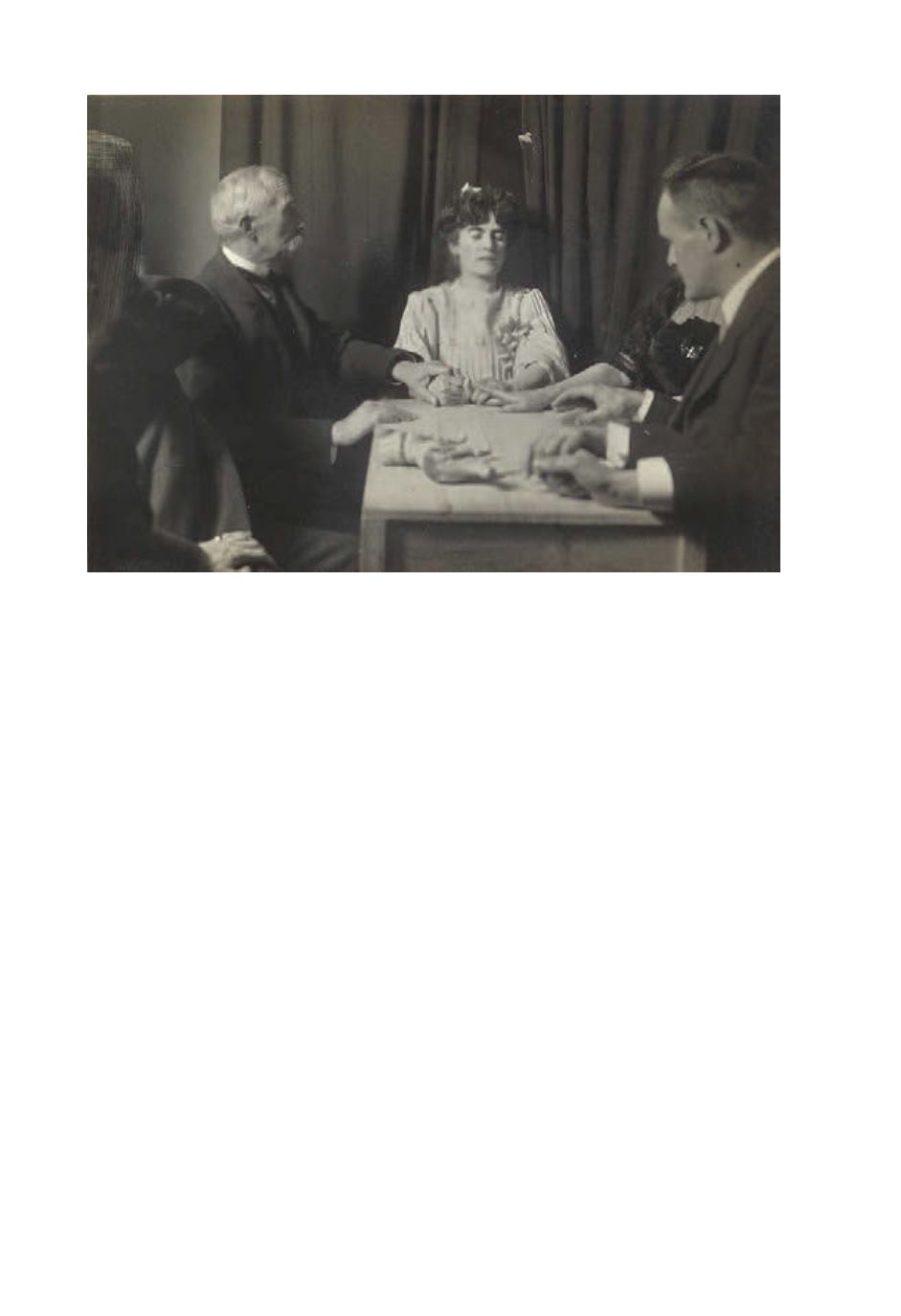

209
●
IMODA, ENRICO, DR.
Fotografie di Fantasmi.
Illustrated with 48 tipped-in silver prints credited to G. Simoni of Rome, and one half-tone, each
depicting a séance held by the young medium Linda Gazzera, most of the images with appearances
of spirits, ectoplasmic forms, and telekinetic phenomena, as well as other participants and Dr. Enrico
Imoda, her observer. 4to, original black-printed cream paper over cloth and board covers, slightly
worn; housed in a custom archival tray-case with leather spine by Jon Buller of Bassenberg Bindery.
FIRST EDITION
.
Turin: Fratelli Bocca, 1912
[7,000/10,000]
Exceedingly rare, there are fewer than 2 dozen copies of this title known worldwide.
Dr. Imoda’s investigation of the young medium Linda Gazzera (1890-1932) relied upon photographic evidence
gathered from 1908-10 in a series of 100 séances.A diagram and photograph in the book depict the deployment
of multiple cameras.The séances were conducted in total darkness, a magnesium flash allowing the cameras to
capture the materialized ectoplasmic forms and telekinetic phenomena produced by Miss Gazzera.
Some of the images present the medium entranced and surrounded by séance participants in dramatic tableaux
reminiscent of scenes from Grand Opera. In several cases, Dr. Imoda himself is included in the photographs,
pulling back a curtain or staring in astonishment at a levitating birdcage.
Fotografie di Fantasmi was published posthumously, with an introduction by Imoda’s collaborator Dr. Charles
Richet.A renowned physiologist, Dr. Richet was awarded the Nobel Prize in 1913, the year after this volume
appeared.A number of the séances in 1909 were conducted under Dr. Richet’s supervision at his home in Paris,
and photographed by the French occult researcher Gillaume de Fortenoy (who wrote the afterword to this volume).
In his preface and in later writings, Richet insists that these photographs of Gazzera’s “ectoplasmic forms” depict
true psychic phenomena, because the scientific protocols employed were too strict to allow trickery. But de Fortenoy,
in his afterword to this volume, casts doubt on Gazzera’s mostly two-dimensional manifestations. He suggests
that if Dr. Imoda had lived longer, he would have shared these doubts.
This copy of Fotografie di Fantasmi includes a pink label on page 88, as issued, in place of a small photograph
that was not available at the time of publication.

















